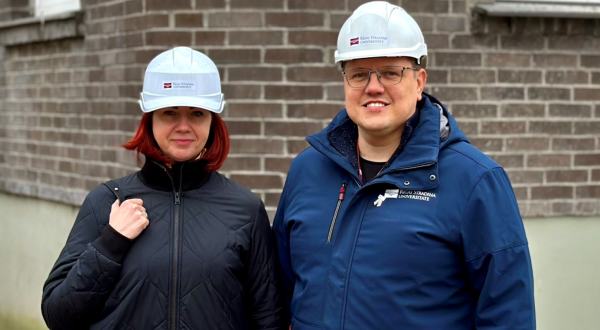Research on malignant kidney tumours
On 14 April, at 15:00, in an open meeting of the Doctoral Council of Medicine, Rīga Stradiņš University, which will take place in the Hippocrates Lecture Theatre (16 Dzirciema Street), Māris Sperga will defend his doctoral thesis “Cicatricial Changes in the Kidneys and their Link to Renal Tumours”.
Renal cell carcinomas are malignant tumours that originate in the cells of the proximal renal tubular epithelium. This group of tumours includes various types of tumours with different prognoses.
Kidney tumours account for 4.4 – 4.9% of all diagnosed tumours in Latvia, and renal tumour incidence rates have a tendency to keep increasing. Renal cancer risk factors include obesity, diabetes and arterial hypertension and the final stage of renal disease. Thus, this raises the issue of the impact of kidney tissue structure on the tumour development process.
Up to now, there has been little research on the impact of the changes of morphological structures on the development of tumours.
The aim of the thesis was to study cicatricial changes in kidneys of various origins and their impact on tumour development, as well as to analyse immunohistochemical properties (there are molecular structures on the surface and inside the cells that regulate processes, these structures can be diagnosed laboratorically).
According to observations, renal tumour incidence rates tend to keep increasing significantly, structural changes in the tissues of kidneys become more cicatricial. Yet the spectrum of incidence of kidney tumours is different compared to the incidence of various types of kidney tumours within the population sample. Consequently, it leads one to consider the impact of other tumour inducers that might have an impact on the prognostic indicators of these tumours.
Immunohistochemical analysis did not show any convincing differences of expressions of cell cycle and prognostic markers (molecular structures regulating cell division and intensity of cell metabolism) while comparing these tumour groups. It should be noted that the presence of p16 (protein – tumour suppressor) pointed to a statistically reliable difference between tumours with previous cicatricial changes in kidney tissues and tumours without these changes. Possibly, it partially explains the milder progression of tumours associated with nephrosclerosis.
Related news
 RSU is growing and developing: major reconstruction underway in the main buildingDevelopment, For RSU Employees, For Students
RSU is growing and developing: major reconstruction underway in the main buildingDevelopment, For RSU Employees, For Students


